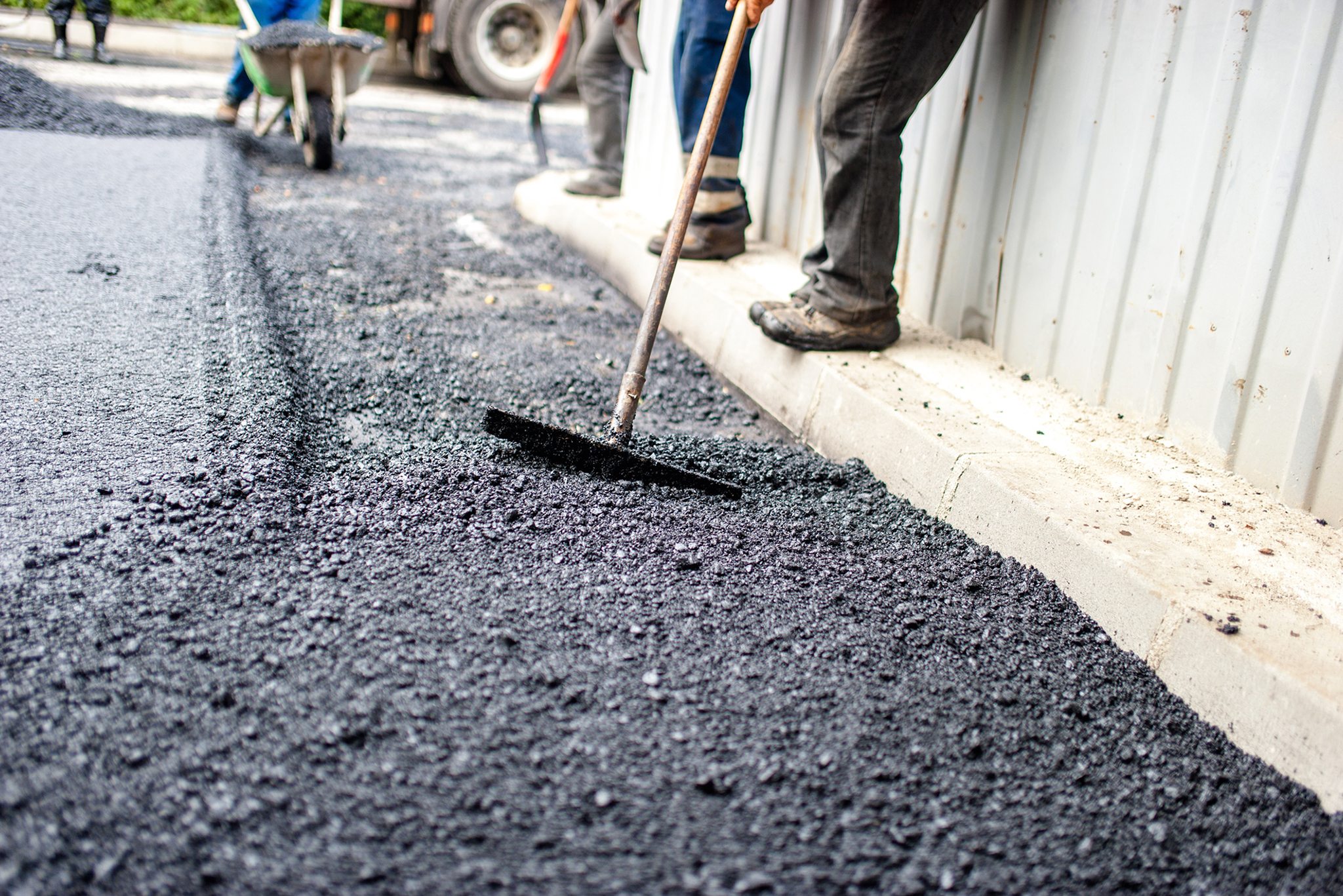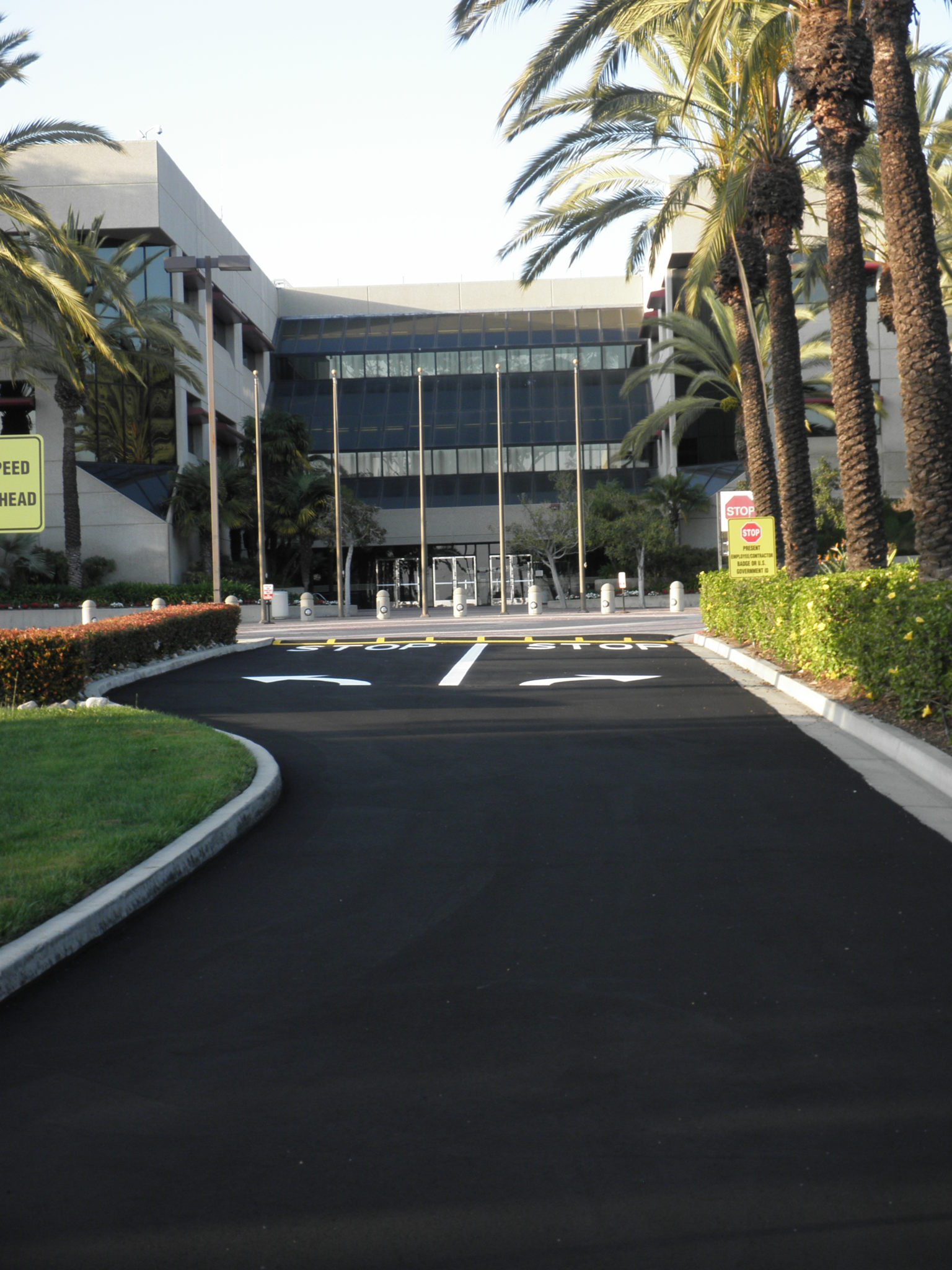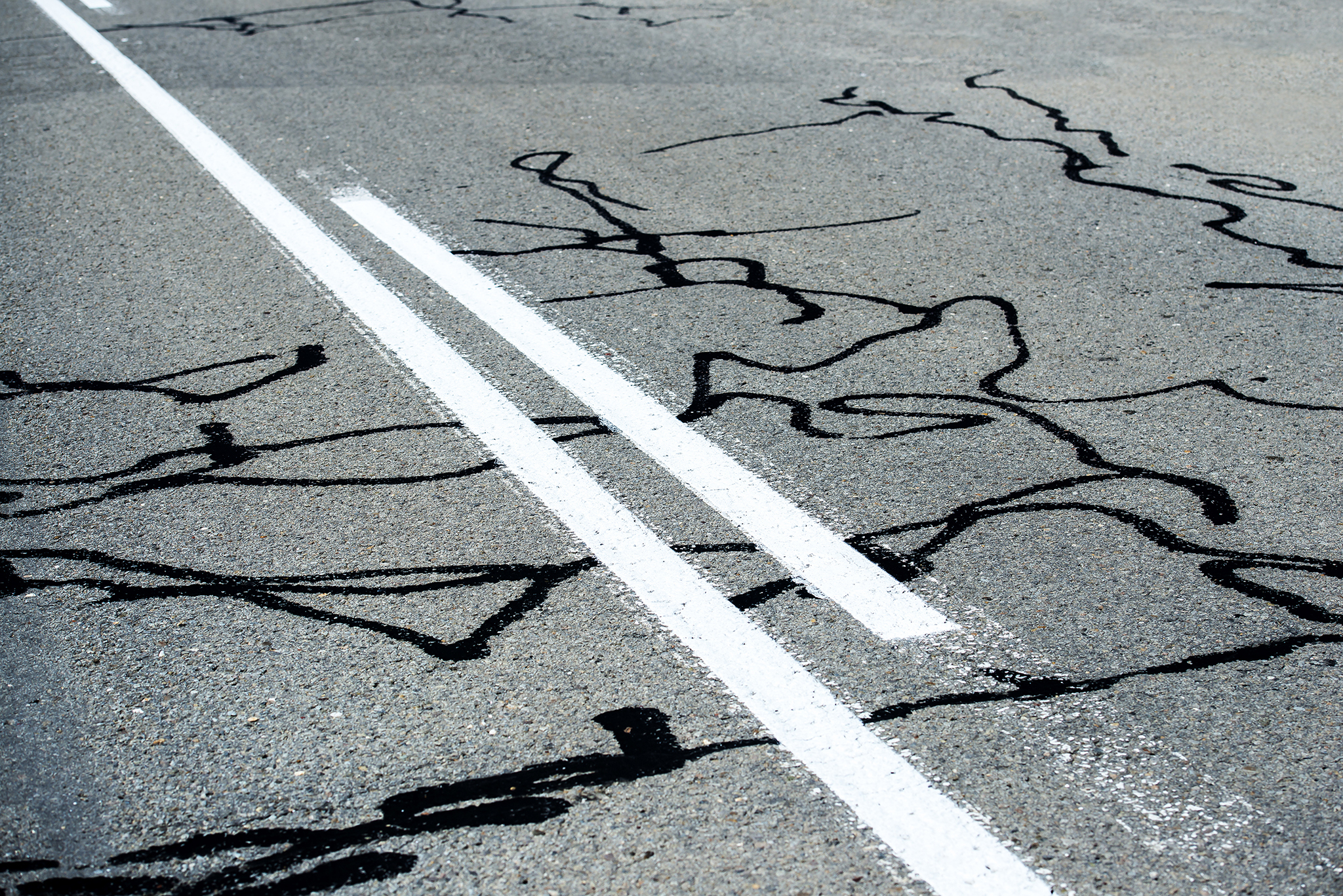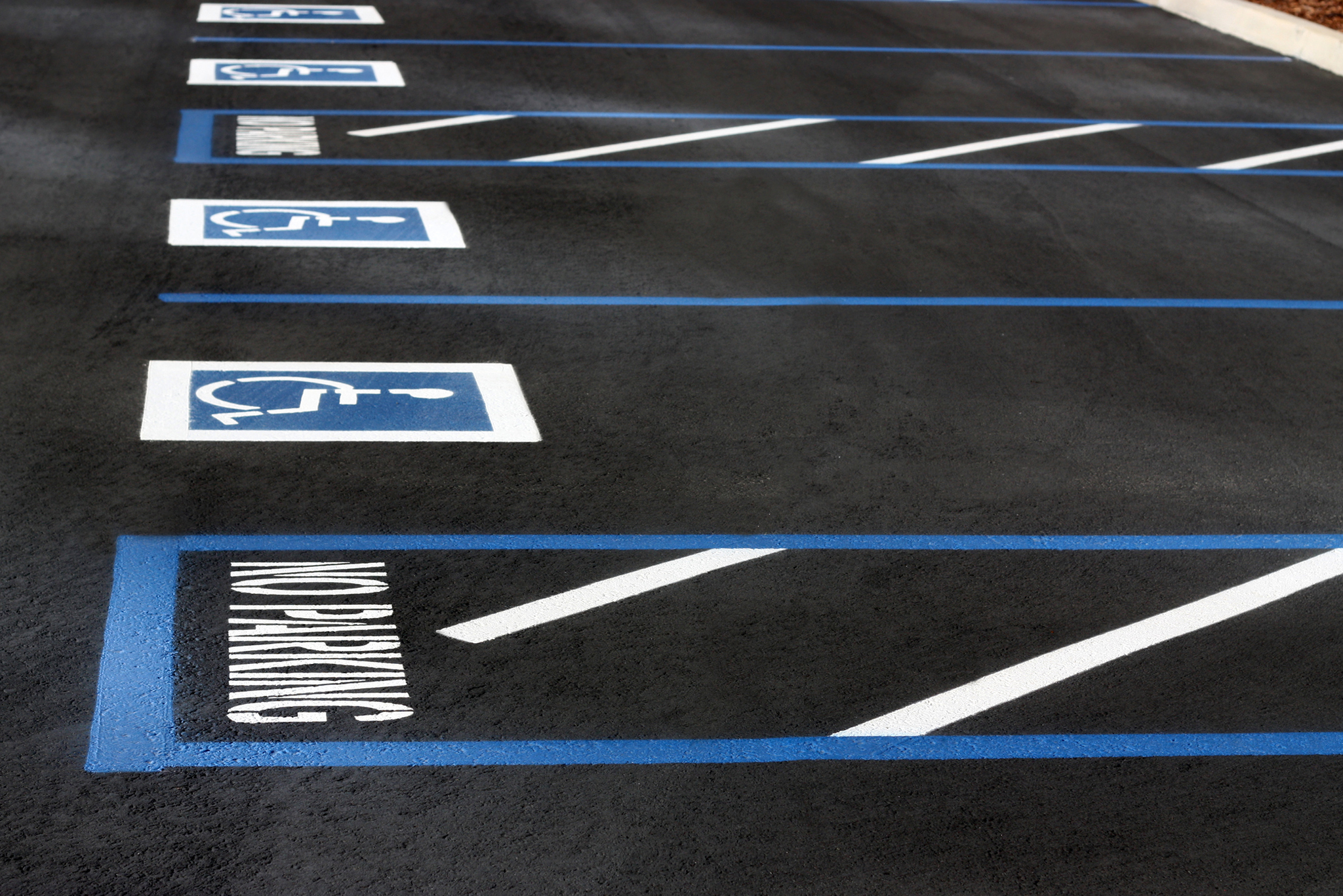Century Paving offers a variety of concrete and asphalt services to meet your specific needs.
Asphalt Maintenance
The key to asphalt maintenance is determining what stage the pavement surface is in the asphalt life cycle. After a thorough site survey, we can recommend the most effective type of pavement preservation. With the right schedule and strategy, the life cycle of your pavement can be extended indefinitely.
There are many techniques used to perform asphalt maintenance, and we’ll work with you to select the best strategy for maximum performance and value. A few of the services we provide are as follows:


Pothole Patching
& Full Depth Replacement
Pothole Patching
Potholes are bowl-shaped holes caused by the disintegration of the asphalt pavement surface. They are a safety hazard and a structural defect that can lead to more costly damage.
The most effective repair is to cut and remove a 1’ area around the pothole and pave with hot mix asphalt. In the event a permanent repair is not possible, cold mix asphalt can be substituted as a temporary stop-gap repair technique.
Full Depth Removal and Replacement
Used frequently to repair fatigued asphalt damage, this technique includes removing the existing surface down to the subgrade or base rock material and installing new asphalt in layers or lifts.
This type of damage is a series of cracked interconnected blocks in the pavement surface that resembles an alligator skin.
Alligator or fatigue damaged asphalt is caused by two primary factors:
- The pavement surface was inadequately constructed to handle the weight placed upon it.
- The base rock or subgrade below the asphalt pavement has weakened.
Overlay & Inlays
Asphalt Overlay
This is common when the existing top asphalt layer begins to erode as sand and aggregates (rock) begin to loosen.
To place a new layer of asphalt over an existing one, we clean the existing asphalt surface, placing an emulsion based tack coat on the surface, lay the new layer of asphalt on top, and then roll it to compaction.
The downside for this type of repair is reflective cracking, where cracks in the old layer appear in the new one over a short time period.
Mill and Inlay
Milling and inlay consist of grinding the existing asphalt surface down and hauling away the layer that has been ground down. Then the surface area is cleaned, a tack coat is applied, and then a new layer of asphalt is placed on the surface and compacted.
Milling is common when the existing surface grading does not allow for additional paving layers without changing drainage patterns. By milling and inlaying, the problems associated with drainage are minimized. However, milling and inlaying do not reduce the effect of reflective cracking.
Overlay with Paving Fabric
Overlaying with paving fabric is a 40-plus-year-old technique that adds a paving fabric prior to placement of the asphalt overlay.
There are a variety of fabrics on the market, but installing a paving fabric as part of an overlay project adds value by reducing the effects of reflective cracking in asphalt overlays.


Concrete Repair
Concrete, unlike asphalt, is a non-flexible pavement surface. Concrete will crack over the duration of its expected life. When concrete is damaged beyond the ordinary crack, however, the best and most effective repair is removal and replacement.
Century Paving concrete repairs include:
- Concrete Sidewalks
- Concrete Trash Pad Slabs
- Concrete Mowstrips
- Concrete Planter Curbs
- Concrete Curb and Gutter
- Concrete Flowline Gutters
- Concrete Catch Basins and Drainage Structures
Sealcoating
Sealcoating is a cost-effective surface preventative maintenance technique designed to lengthen the lifespan of the top asphalt pavement layer.
Seal coat is not asphalt but a protective waterproof cover over the pavement structure. It provides not only resistance to the elements but an aesthetic appeal. This is the best way to make an older surface look rejuvenated. Seal coat is widely used in parking lots and school sites to protect top layer pavement surfaces.


Crackseal
Crackseal or crack filling has two primary purposes:
- To prevent the intrusion of water thru the crack into the subgrade of the pavement surface.
- To prevent material from filling the crack with dirt and debris.
Since asphalt is a flexible, pavement cracks will expand and contract during hot and cold climate cycles. If water, dirt, or sand is allowed to penetrate into the subgrade of the pavement it can contribute to costly long-term damage.
There are two types of crack filling that can be performed: cold pour and hot pour crack filling. The determination of the type of crack repair depends upon the depth and severity of the cracking.
Pavement Markings
The final step in any successful project is painting the parking stall lines and markings. Lines and stencils can be painted in a variety of colors.
Here are some of the pavement marking services we can provide.
- Parking Stall Lines
- Parking Stalls Stencils
- ADA Parking Stalls
- Arrows and STOP stencils
- Speedbumps
- Game Courts-Hopscotch-Basketball Courts-Volleyball Courts
- Fire Lane Lines and Stencils
- Red, Yellow, Blue Painted Curbs

Our Process
We have found that our customers all share the same pain. Rising costs and reduced budgets have managers/owners and end users looking for the best value for their money. More importantly, selecting the wrong pavement repair strategy can end up costing more in the long run.
Century can provide a pavement preservation strategy that identifies the best repair methods within your budget. We have found that the least expensive job is the one that is done right the first time.
1. An Initial Meeting or Jobwalk
The goal of our initial meeting or job walk is to identify the client’s needs for a particular project.
2. Site Walkthrough / Evaluation
We invite the client to walk the site and point out specific areas of concern that may not be apparent.
3. Preparation of Solution Cost
After reviewing the data, we prepare the cost estimate for the project solution.
We outline each step of the proposal and provide a diagram of the current project conditions, as well as a timeline or production schedule if necessary.
If specialty techniques or products are part of the solution proposal, we provide the client with the manufacturers’ technical data.
4. Review of the Solution with Client
We offer an opportunity to review the solution proposal and ensure that it meets all the client’s objectives. At this point, the client may ask for changes to the proposal.
We often will schedule another site walk-through with the client to mark out areas of repair and ensure that all areas of concern have been identified and incorporated into the proposal. In some instances, the client may ask that we present our solution to additional stakeholders.
5. Pre-Construction Meeting
We schedule a pre-construction meeting with the client and all interested parties on the project. We discuss phasing and the construction schedule and we have present at the meeting our production manager and sales representative.
It is at this meeting we discuss all final plans and decision regarding the project as well as provide the client with key members of our staff who will be scheduling, building, and managing their project.
We also provide the client a list of special items to consider for their project such as notifying tenants, turning off irrigation, and notifying overnight security partners.
6. Construction of the Project
During construction of the project, we invite the client to see our work in action and give them an opportunity to see the value that Century Paving.
In the event that the client is unable to be present during construction, we will email and/or text the client status updates regarding the project on a daily basis.
We can provide more frequent updates during critical phases, including photographs of the project in progress directly from the field.
7. Review of the Solution with Client
We offer an opportunity to review the solution proposal and ensure that it meets all the client’s objectives. At this point, the client may ask for changes to the proposal.
We often will schedule another site walk-through with the client to mark out areas of repair and ensure that all areas of concern have been identified and incorporated into the proposal. In some instances, the client may ask that we present our solution to additional stakeholders.

